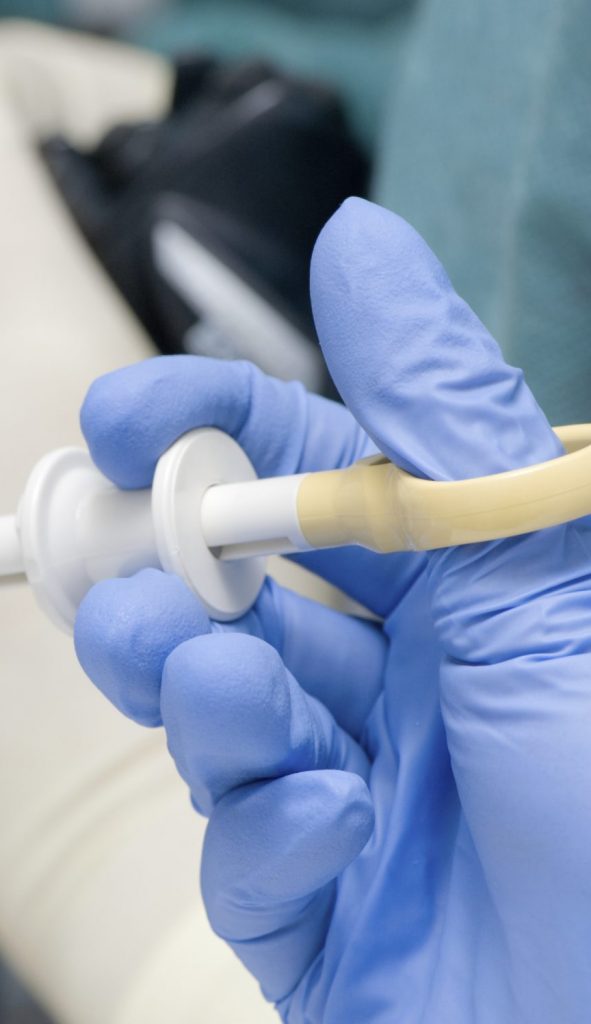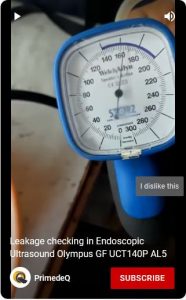
Endoscopic Ultrasound (EUS) or SonoEndoscope Repair
Sonoendoscopes or Endoscopic Ultrasounds are expensive and relatively fragile. These equipment need good care and proper handling is important. The fiber-optic cables are fragile and easily damaged. Most common damages or defects in endoscopic ultrasound machines are blockages, leakages, angulation, image quality issues etc. Endoscopic ultrasound repair services are available in India – Air or water channel replacement, angulation adjustment, air / water nozzle unclog or replacement and other issues like Angulation rubber replacement, Air/Water nozzle unclog and/or replacement, Air/water channel replacement, Angulation adjustment, Variable stiffness adjustment, Angle drive rebuild, Control button replacement, Light guide tube/universal cord replacement, Biopsy channel replacement, Suction channel replacement, Suction cylinder or Air / water cylinder unit replacement and Minor & Major fluid invasion
Most Common Endoscopic Ultrasound Repairs
- Repair/ Renewal of the bending rubber – One of the most annoying endoscopic ultrasound repair issues is that it does not bend or angulate smoothly. Angulation may be tight or doesn’t angulate as per manufacturer specifications. The bending section may bend irregularly or turn to the wrong side. There are several reasons this may happen – e.g Forced angulation may lead to stretch or break in angulation wires. Buckling of the insertion tube can also stretch and break wires. If you notice any ‘play’ in the angulation control knobs, this usually indicates an angulation adjustment is needed. Angulation adjustment/angulation wire replacement, bending section mesh, or articulating section replacement solves these problems.
- Refurbishment or Lens replacement for ultrasound probe head – There could be small air bubbles, cracks, or holes on the lens. These can not only render poor-quality images but also further spoil the probe if not repaired early. Lens replacement can solve this problem. Unlike other endoscopes, this is a specific endoscopic ultrasound repair issue and can be handled by a specialist service provider in ultrasound probe repairs.
- Renewal of the fiber optic cables – May is required if there is damage or breakage. This can be easily detected when the quality of an image is deteriorating.
- Connector repair – The connector pin could be damaged due to improper insertion and can result in poor, inconsistent images. If the connector pins are broken or damaged, the connector may require repair or replacement. Frequent pressure or pulls on the strain relief between the cable and connector could end up damaging the connection.
- Exchange of control knobs – If buttons are not working or cause constant freezing and beeping of the Processor, this may also be due to fluid invasion. Buttons may need to be replaced.
- Air/water valve replacement and Suction valve replacement – If any of these valves are
 malfunctioning and it is not possible to irrigate or rinse the soiled parts, they may need replacement. In particular, the suction or aspiration channel may be prone to potential soiling and clogging caused by different secretions or even small solids in the patient body. This is one of the most common endoscopic ultrasound repair or replacement work requirements.
malfunctioning and it is not possible to irrigate or rinse the soiled parts, they may need replacement. In particular, the suction or aspiration channel may be prone to potential soiling and clogging caused by different secretions or even small solids in the patient body. This is one of the most common endoscopic ultrasound repair or replacement work requirements. - Exchange of supply hose
- Replacement of insertion tube
- Repair or Replacement of the mechanical control unit
- Replacement of the biopsy and flushing channel – biopsy or suction channel replacement may be required due to blockage and/or wear and tear. Damage to Biopsy Channel is usually caused because of – Kinked, damaged or open Flexible Endoscope biopsy forceps causing tears in the channel material. Buckling of the insertion tube can also cause stretch and strain in the channel. Forcing instrumentation through the channel can cause wear or tears in the channel material. This happens due to forced insertions when the scope is not bending as required. Ensure manufacturer specifications are adhered to and not force any instrument beyond the point. You will know if channel replacement is required – If instruments do not pass or blockage/resistance is felt in the channel. Buckles or tears are seen in the channel material. If poor suction is noticed, if a groove is worn in the suction port, suction is decreased, etc.
